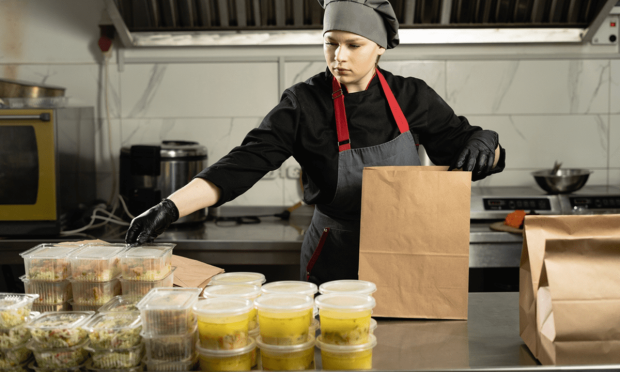Virtual Restaurants May Need to Make Changes to Maintain Market Share

Virtual restaurants have become a mainstay of the restaurant industry, but until now, given the novelty of the model, there has not been a central body to hold them accountable when it comes to issues of safety and of intellectual property. Now, to hold onto the share gains they have made, virtual restaurants may need to slow down their expansions to focus on the quality of their existing locations.
On Saturday (July 30), the Virtual Restaurant Association (VRA) announced its formation, aiming to look after these restaurants’ health and safety standards and their business practices. The association cites “the number of unsafe and copy-cat brands” that “has flooded the market” as significant problems in the industry that it aims to tackle. If the body becomes a significant force in the industry with a strong consumer-facing presence, it could demand changes from virtual restaurants looking to maintain their customers’ loyalty.
The news comes after reports circulated last year that Florida-based ghost kitchen giant Reef Technology had been cutting corners in ways that could potentially put employees and consumers at risk. Restaurant Dive reported in December that in the company’s home state, the state’s Department of Business and Professional Regulation found health and safety violations at 58 of 61 locations inspected, and 21 had “high-level safety violations.”
Similarly, around the same time, Insider reported that Reef “has been frequently cited” for running its ghost kitchens without the necessary permits and consequently without the safety checks that come with these permits.
“To be clear, Reef understands the importance of permitting, and we want to be regulated,” a Reef spokesperson told the outlet in an email at the time. “As we’ve stated previously, in all cases, we hold ourselves to the highest standards of food handling and safety training in all our kitchens. The health and safety of our employees and customers are Reef’s top priority.”
Related news: Ghost Kitchen Boom May Be Built on a Shaky Foundation, Reports Show
Many independent restaurants supplement their revenues by adding virtual brands to their kitchens and many national brands grow their footprints with virtual expansions. In an interview with PYMNTS’ Karen Webster earlier this year, Andrew Robbins cited the example of TGI Fridays licensing its brand virtually to independent operators to capitalize on its name recognition.
“TGI Fridays had as something like 94% consumer awareness — consumers know the brand,” he said. “But something like only 20% of people can go to a TGI Fridays. That’s 74% that they’re missing on because of physical constraints.”
See also: Labor Challenges Stifling Would-Be Restaurant Boom, Paytronix CEO Says
The 2022 edition of PYMNTS’ Restaurant Readiness Index, created in collaboration with Paytronix, found that more than half (53%) of restaurants generate more than 25% of their sales via digital channels. Additionally, the study, which drew from a survey of more than 500 managers of quick-service restaurants (QSRs) and full-service restaurants (FSRs) across the country, found that about one in three restaurants generates 50% or more of their sales through digital channels.
Read more: More Than Half of Restaurants Depend on Digital Sales, Despite Uptick in On-Premises Orders
Moreover, the July edition of PYMNTS’ ConnectedEconomy™ study, “The ConnectedEconomy™ Monthly Report: The Rise Of The Smart Home,” which draws from a May survey of a census-balanced panel of more than 2,600 U.S. adults, finds that 45% of consumers had ordered food from a restaurant’s website for home delivery in the previous month. Plus, nearly one in four consumers did so once a week or more. Similarly, 43% of consumers reported ordering from a restaurant aggregator such as DoorDash or Uber Eats in the same period, and 26% did so once a week or more.
Additional details: New Data Shows Convenience Drove Smart Home Upgrades for 83M Consumers in 2022
